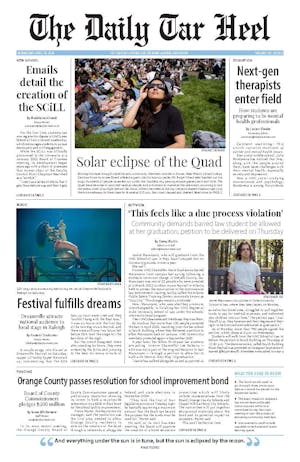The conversation surrounding charter schools has piqued national attention in recent months with the confirmation of Secretary of Education Betsy DeVos and her support of them.
North Carolina and other states have been faced with the challenges that accompany charter schools and the variability of their success.
On average, students enrolled in online charter schools lose the equivalent of 72 days of learning in reading and 180 days in math, based on a traditional 180-day school year, according to a 2015 report by the Center for Research on Education Outcomes — amounting to nearly half the expected learning in reading and no learning in math.
The pattern of weaker academic growth compared to traditional public schools was consistent with students of various backgrounds and socioeconomic status. The data was collected from over 100 schools across the country.
Brian Gill, a senior fellow at the Mathematica Policy Research, authored a 2015 report focusing on 200 online charter schools that served 200,000 students across the country. He said that there was a mismatch between the online programs being offered and the students’ needs.
“The results were very disturbing, and we pointed that out at the time,” Gill said. “Again it really looks like it may be the case that online programs with only a small live interaction between students and teachers — that may work well for certain kinds of students, particularly self-motivated students, but a lot of the students that enroll in online charter schools are not those students.”
The first law creating a charter school was passed in 1991 to promote school choice and schools that weren’t as restricted by their state’s rules and regulations so they could educate using more experimental ideas to better serve their students’ needs.
The hope was that these innovative ways to teach students could be used for traditional public schools as well.
To enroll in a charter school there is typically a lottery process in which students apply to a charter school and then are randomly selected for admittance.


